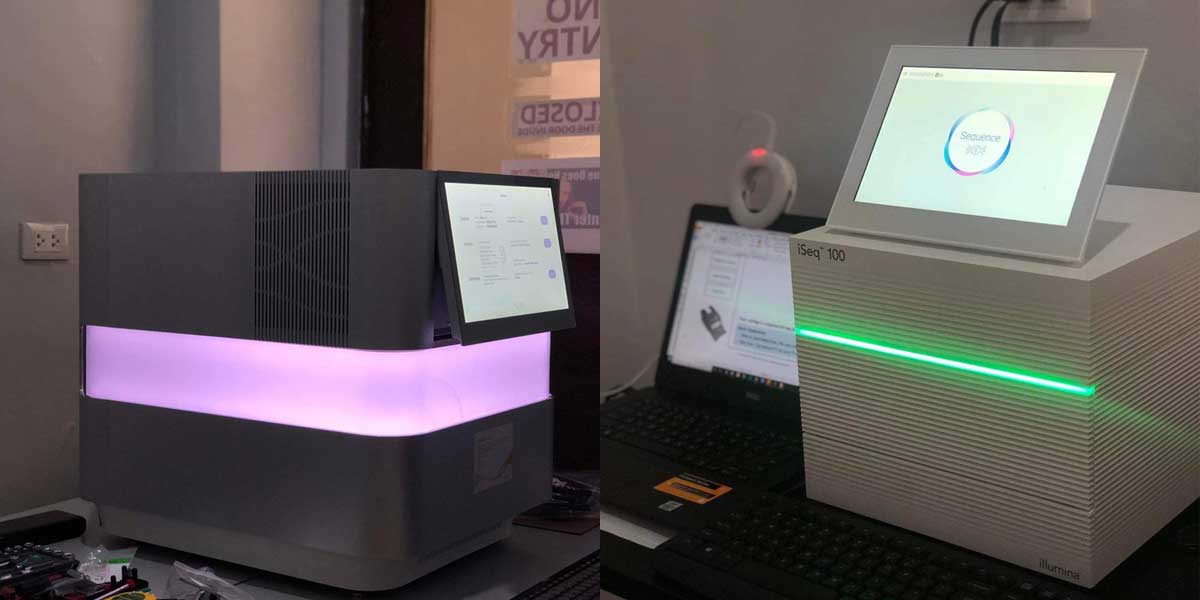
By Joseph B.A. Marzan
The director of Philippine Genome Center-Visayas (PGC-Visayas) said Friday that they expect to detect coronavirus disease 2019 (COVID-19) variants at a faster rate with their new genome sequencing equipment.
PGC-Visayas Director Dr. Noel Ferriols told Daily Guardian on Air that they were able to acquire Next Generation Sequencers, which would allow them to read ribonucleic acid (RNA) and determine characteristics of viruses and other organisms at a molecular level.
The RNA, which is the viral equivalent of the deoxyribonucleic acid (DNA) in humans, animals, and other living organisms, contains the genetic information, including mutations of viruses and other RNA-based molecular entities.
In relation to COVID-19, the sequencer equipment can determine the variants in samples obtained from confirmed COVID cases.
Aside from determining COVID variants, the sequencer can also spot characteristics of different types of cancers, look at actual causes of ice-ice diseases in seaweeds, and breeding programs for shrimps, among other uses.
“The [sequencers’] main job is actually to be able to read the DNA and the RNA. For example, for the biosurveillance of COVID-19, we could use it to determine variants of concern that may come out eventually being related to COVID,” Ferriols explained.
“There are other applications that the sequencers can be used for. One related application in health is characterizing different kinds of cancers in humans, with test panels designed for this machine. In the field of fisheries, we have a current project looking for actual causes of ice-ice diseases in seaweeds, and what we want to know in the level of their RNA and DNA, what are the specific reactions happening in them, for environmental and bacterial [stressors],” he added.
Ferriols said that with the new sequencers, they hope to ease the burden of the main PGC at the University of the Philippines Diliman in Quezon City in conducting sequencing procedures for COVID cases.
He likened their capacity-building to that of the Research Institute for Tropical Medicine, which was the sole testing laboratory for COVID-19 specimens when the pandemic started in March 2020.
“The main aim why PGC Visayas and Mindanao were equipped with these Next Generation Sequencers is to really hasten the turnaround time of samples. If we could get more granular data, we can come up with more specific strategies for us to carry out quarantine procedures that can help, and in effect it can help keep the economy going,” he said.
For the RNA samples, the PGC Visayas has partnered with the Western Visayas Medical Center (WVMC), which hosts the region’s only sub-national laboratory for COVID.
But even with the new sequencer, the primary challenge for their laboratory now is how to transport and handle extracted RNA samples from the WVMC.
“Once the RNA is extracted from the virus, it becomes very sensitive. Just last week, when we tried to get the first samples from the WVMC, we have had to test different conditions of transporting to the PGC Visayas laboratories in Miag-ao. That is just for one hour, but that hour is also very critical,” he stated.
The sequencers are part of the PGC-Visayas’ current plans to increase its capacity for genomic sequencing amid the COVID pandemic, which was not originally in their strategic plan.
The original strategic plan of the PGC Visayas when it was started in 2019 was to merely enable preparation of samples to be sent to the main PGC laboratory at the University of the Philippines-Diliman.
But the emergence of the Delta (B.1.1.351) variant in the country exhausted PGC-Diliman’s resources and had to recalibrate to quickly beef up its Visayas and Mindanao laboratories.
“The PGC’s executive committee met and agreed that we can no longer stick to our original plan of building up our capacity gradually. The initial projection was over a five-year period, but we saw the logistical problems of sending samples to Manila to get the results,” he narrated.
A P92-million budget for the for the expansion came from the Department of Budget and Management (DBM), including P30 million for the sequencer, P27 million for reagent consumables for the next 6 to 8 months, with the rest of the budget going to additional equipment and for salaries of researchers who would conduct sequencing procedures.
The Department of Science and Technology (DOST), which initially funded the Visayas and Mindanao PGCs, was unable to provide funding due to budget programming constraints.
As of this writing, the PGC Visayas has been able to test 93 extracted RNA samples from the WVMC, and aims to sequence 350 samples per week.



















